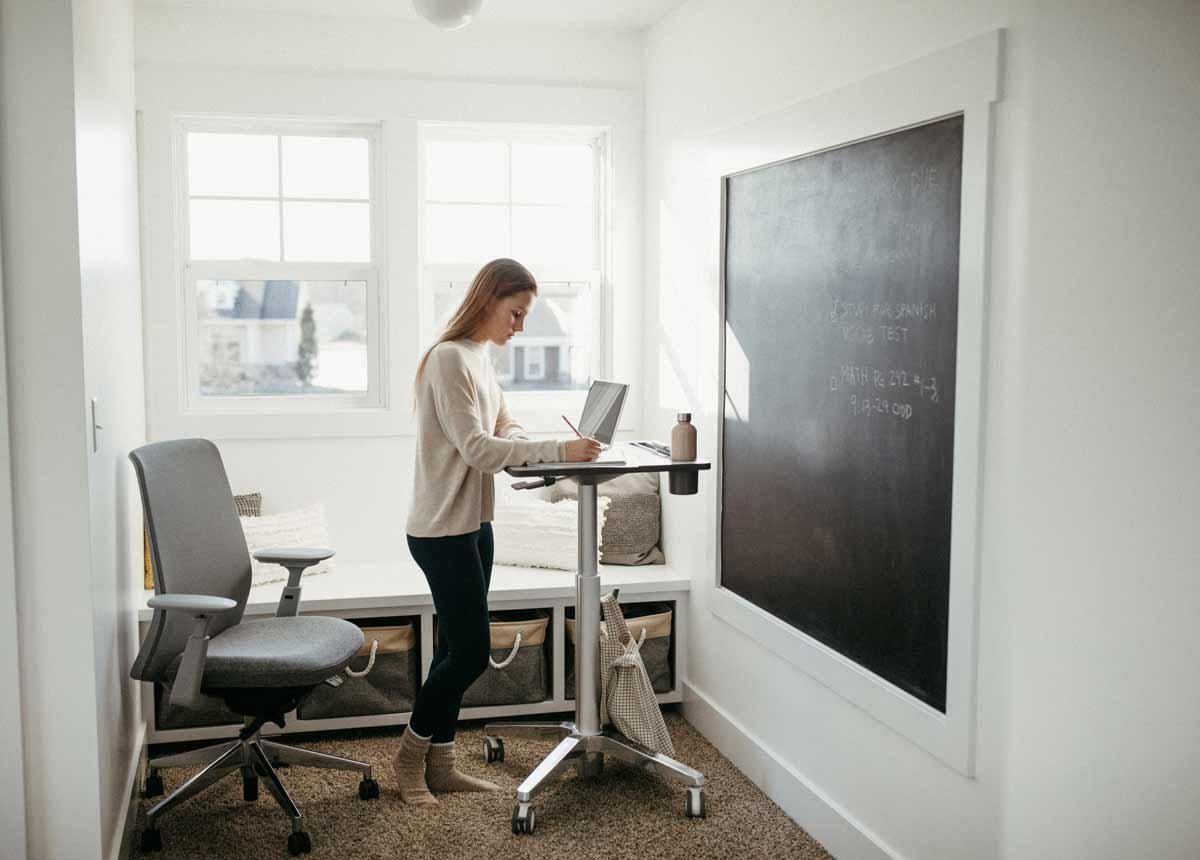October is National Ergonomics Month, a great reminder that the way we sit, move, and work every day affects how we feel. Ergonomics isn’t just about fancy equipment; it’s about setting up your workspace so your body can work comfortably and efficiently.
What is Ergonomics?
Ergonomics is the science of designing spaces and tools to fit the person using them. When your space supports you properly, you feel better, think clearly, and work more efficiently. When it doesn’t, discomfort and fatigue can creep in over time.
As a Certified Professional Ergonomist (CPE), I’ve been trained to understand how thoughtful workspace design can prevent injuries, improve overall well-being, and boost productivity by creating environments that are both comfortable and efficient.
Why It Matters
Good ergonomics helps prevent pain and injury, especially to the neck, back, wrists, and eyes. It also boosts productivity and focus. When people feel comfortable in their workspace, they can bring their best energy to what they do.
Small Changes That Make a Big Difference
Even small adjustments can improve comfort throughout the day:
- Keep your monitor at eye level to prevent neck strain.
- Sit so your elbows are at a 90-degree angle and your feet are supported.
- Switch between sitting and standing when possible.
- Take quick movement or stretch breaks every 30 minutes.
- Pay attention to lighting and glare to reduce eye strain.
Ergonomics at Home
If you’re working from home, without an adjustable task chair, you can still create an ergonomic setup with what you already have on hand. Here are some tips for creating an ergonomic setup at home:
- Monitor Height: If you are working on a laptop, use a laptop stand or stack of books to elevate the top of your screen to be slightly below eye level. Make sure your body is centered with the screen to avoid neck or shoulder rotation.
- Seat Height: If your feet are dangling off the floor, add a foot stand or some books to support your feet. If your seat is too low, try sitting on a folded towel or blanket for extra height. Thighs should be parallel to the floor.
- Armrests: Set armrests at elbow height so your shoulders stay relaxed. No armrests? Use a palm rest in front of your keyboard to reduce strain on your wrists and arms.
- Lumbar Support: Your lower back should be supported by your chair. If it isn’t, roll up a towel or small cushion to fill the gap.
Take a Moment to Check Your Setup
Take a few minutes to check your setup. Adjust your chair, raise your screen, or add a small support cushion. The goal of ergonomics is simple: helping people feel comfortable, healthy, and supported wherever they work.
Schedule an Ergonomic Assessment For You or Your Team
For more tips on how to create an ergonomic work setup, or if you would like to schedule an ergonomic assessment for your team or client, please reach out to me.








